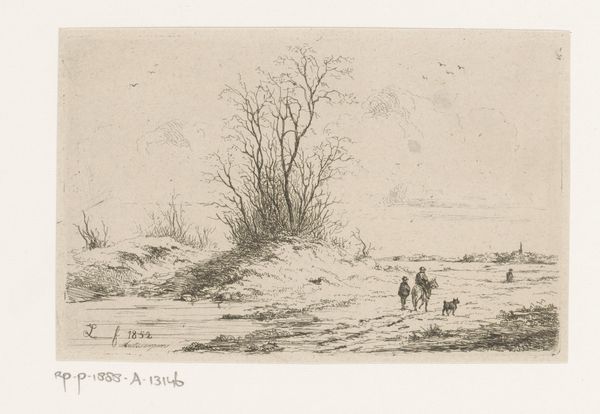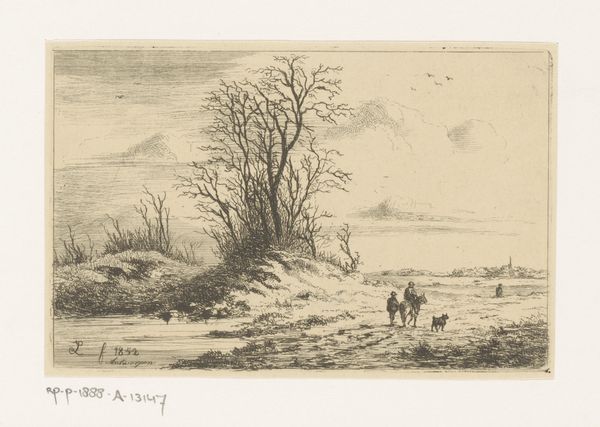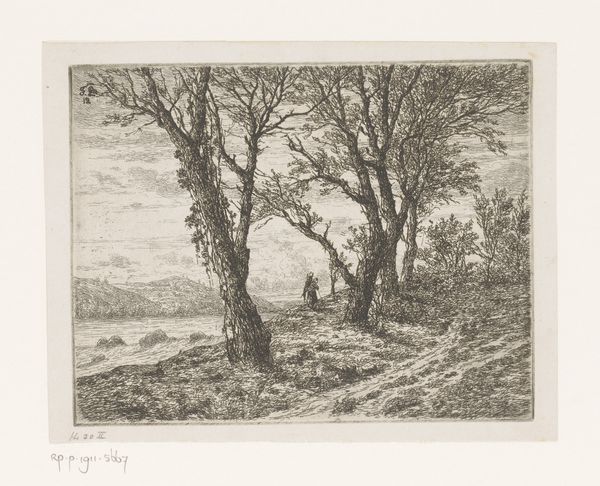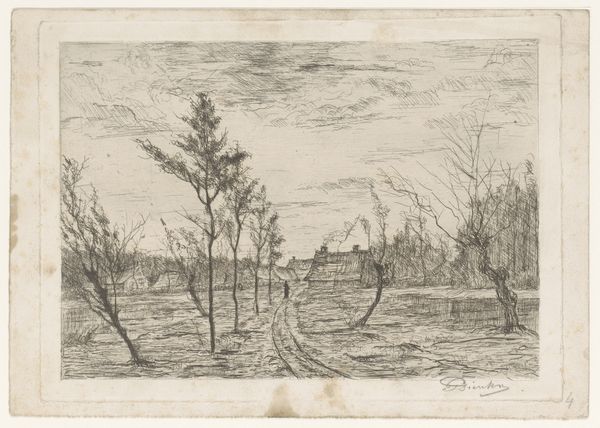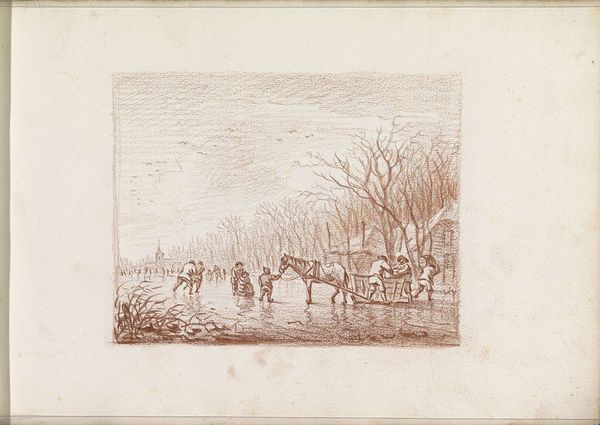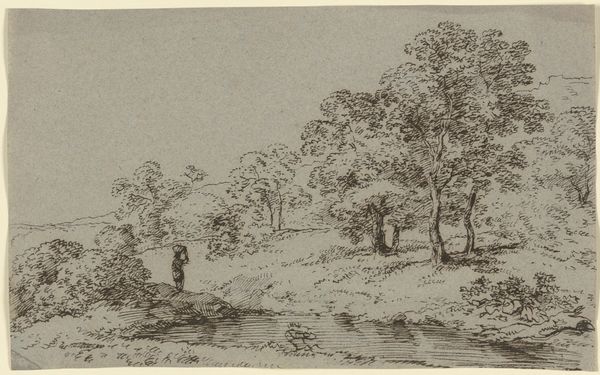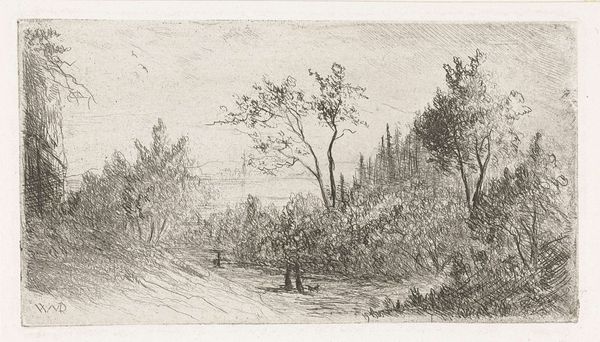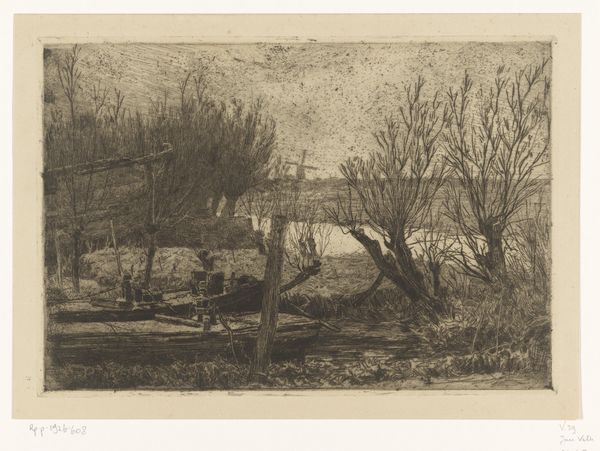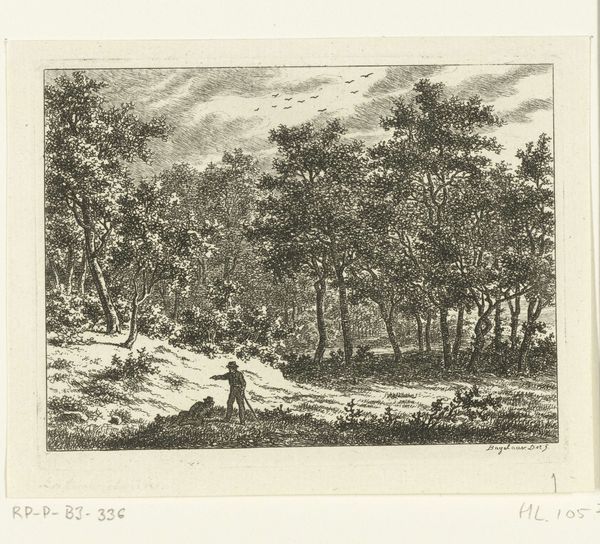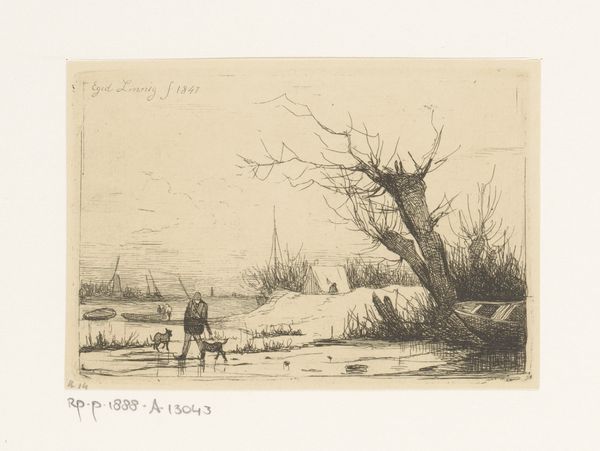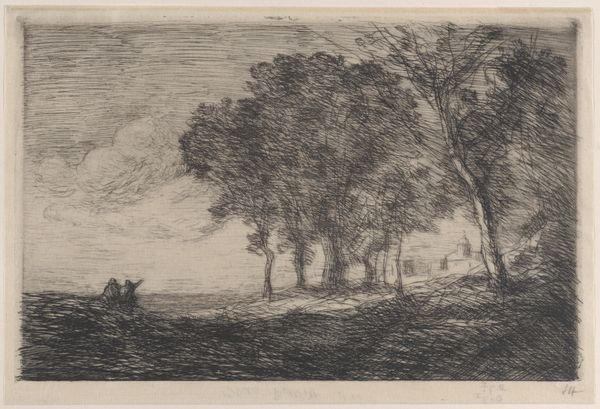
print, etching
#
natural tone
# print
#
etching
#
landscape
#
natural palette
#
realism
Dimensions: height 91 mm, width 143 mm
Copyright: Rijks Museum: Open Domain
Editor: Here we have Jean Théodore Joseph Linnig’s 1852 etching, "Winterlandschap bij Beert." The scene feels bleak but there's also a strange beauty to its starkness. What catches your eye about this work? Curator: The etching’s strength lies in its delicate rendering of texture and light. Observe how Linnig uses varied densities of lines to describe the subtle gradations of the sky, contrasting the dense thicket on the left with the skeletal trees in the foreground. This manipulation of the medium – the very essence of the etching technique – allows the composition to evoke the dampness of a winter landscape, all within a limited tonal range. How does the artist use line to create a sense of depth? Editor: I see what you mean. The density of the lines definitely thins out in the background near the houses, making those buildings look farther away, and creating an impression of atmospheric perspective despite the minimal color palette. What do you think about the placement of the figures? Curator: The figures, though small, play a vital role. They are not merely anecdotal. Consider how their placement within the central horizontal band of the composition draws the eye deeper into the landscape, anchoring our gaze and establishing a sense of scale. This compositional technique highlights the relationship between human existence and the overpowering elements of nature. Editor: That's a different way of seeing them, not just people but also an important part of how the whole image works. It really highlights the impact that every single element has on creating a unified experience. Thanks! Curator: Indeed, recognizing the formal relationships within a work enhances our comprehension and appreciation of its inherent visual language. Thank you for your insightful observations.
Comments
No comments
Be the first to comment and join the conversation on the ultimate creative platform.
